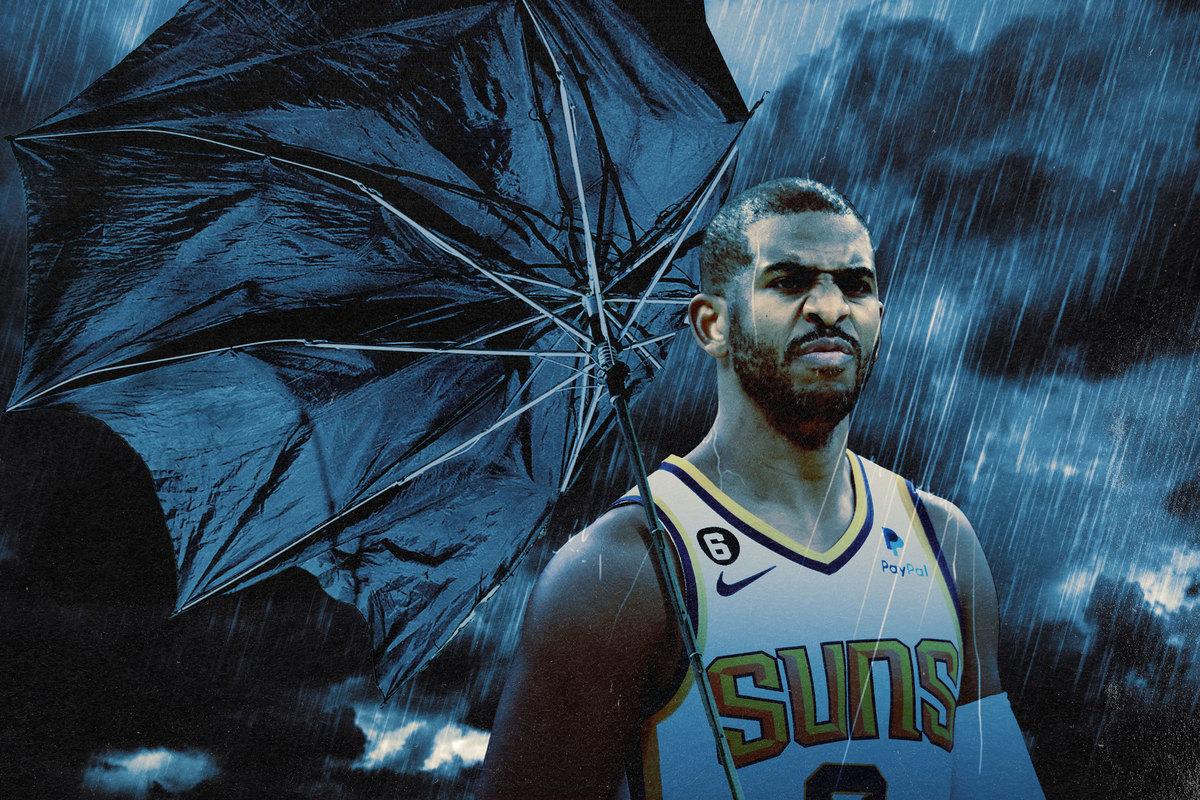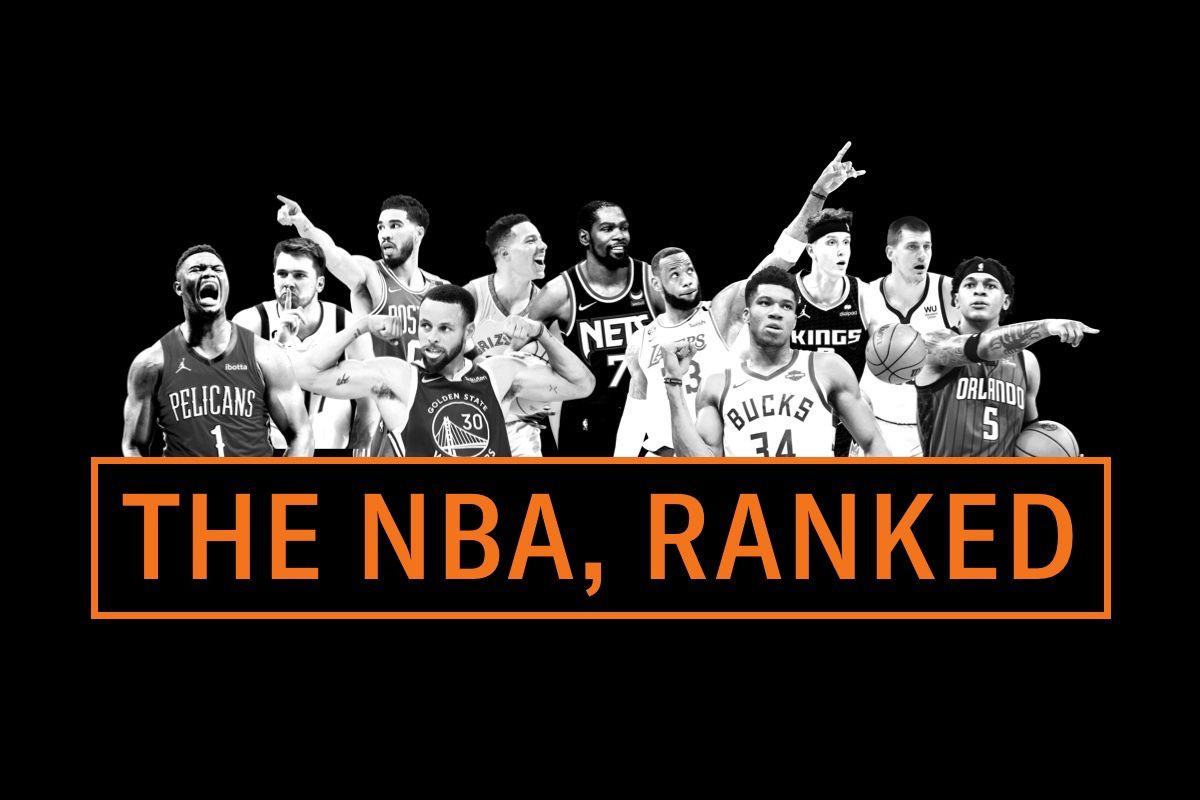
Since the start of December, four teams have held the no. 1 seed in the Western Conference standings. Three of them still reside atop the West, as the Denver Nuggets, Memphis Grizzlies, and New Orleans Pelicans all seek their first NBA Finals trip.
And then there are the Phoenix Suns, the fourth member of that quartet, who entered December with a 15-6 record and ended it in free fall. Now with star Devin Booker injured and a losing record at 20-21, the Suns head into Tuesday’s showcase against the Golden State Warriors trapped in the morass that is the middle of the Western standings: Move half a game up and they’re in sixth place, avoiding the play-in tournament; move half a game down and they’re in 11th place, missing the postseason entirely.
Either scenario at this point represents a steep decline compared to the start of the season, and to last season, when Phoenix coasted to the no. 1 seed with a 64-18 record. Even after a calamitous collapse in the playoffs, that regular-season dominance suggested the Suns would contend again. As I wrote before this season:
History is in the Suns’ favor, after they became the 32nd team in NBA history to lose fewer than 20 games in an 82-game schedule—because those 31 previous teams won, on average, 59.3 games in the next season.
In fact, not a single one of those teams that went 63-19 or better declined even to mediocrity the following year, as the worst of the bunch still won 51 games the following season. So if the Suns win 50 or fewer games this season, that will represent an unprecedented collapse.
Hello, unprecedented collapse. Since the start of December, the Suns have separate losing streaks of five and six (and counting) games. Before last month, their longest losing streak since Chris Paul’s arrival in 2020 was just four, when they dropped games 3 through 6 of the 2021 Finals.
With Booker and key role player Cam Johnson both injured, and with Paul himself now hurt—he missed the Suns’ loss to the Cavaliers on Sunday and has an unknown timetable to return—Phoenix’s fall might not be over, either. Consider the challenge of the upcoming schedule, with a four-game road trip to Golden State, Denver, Minnesota, and Memphis, followed immediately by home dates against the Nets, Pacers, and Grizzlies. Booker will miss all of those games, and more. The Suns’ hopes of avoiding the play-in tournament, or at the very least, their chances of hosting a playoff series again this spring, might end early.
Even when their injured guards return, the Suns rest atop a much wobblier base than they did a season ago. The problems start with Paul, who is still a good offensive player at age 37—he’s making his 3s at a 40-percent clip and has an elite assist-to-turnover ratio—but far from the player who was a worthy All-NBA selection the past two seasons in Phoenix. This new (er, older) Paul already missed 14 games with a heel injury, with more to come as his hip issue persists. When he has played, he’s posted career lows in:
- Points per game (13.1)
- 2-point field-goal percentage (44 percent)
- Free throw percentage (80 percent)
- Adjusted true shooting percentage (4 percent below league average)
- Player efficiency rating (17.4)
- Offensive box plus/minus (1.7)
As a team, the Suns have dropped from third in effective field goal percentage last season, per Cleaning the Glass, to 18th now. Most individual Suns are shooting about the same percentages as they did last season, or even better in the case of backups Torrey Craig and Cam Payne. But Paul and Mikal Bridges have seen precipitous drops in their shotmaking, or the difference between their actual eFG% and their expected eFG%, based on Second Spectrum measurements like shot location and defender distance.
Shotmaking for Returning Suns
Paul’s poor play has sobering ripple effects for a would-be contender. Even at the Suns’ peak, their offensive performance was always a tad precarious because it relied on an inefficient shot profile and midrange excellence from Booker and Paul. Yet after leading the league in midrange accuracy each of the first two seasons with Paul, Phoenix has dropped to 20th this season, per CtG.
If the Suns can’t score from midrange at an efficient clip—and they’re still taking midrange shots at a high rate; they’re just not making them anymore—they just won’t score much, period. They still never get to the rim (29th in rim rate this season, 30th the last two seasons), and they bleed points at the free throw line every night.
Phoenix ranks 29th in offensive free throw rate and 30th on defense, per CtG, which works out to a net difference of minus-6.7 free throws per 100 shot attempts, by far the worst in the league. Last season, by comparison, the Suns were only minus-1.7 free throws per 100 shot attempts.

To be fair, the Suns aren’t actually as bad as they’ve looked of late, for two reasons. The first is poor luck in close games, which is unprecedented for a Paul-led team (at least in the regular season). In every season of his career, until now, the 18-year veteran’s teams finished with a winning record in clutch games (within five points in the last five minutes). They were often the best in the league. Last season’s Suns, for instance, were 33-9 in the clutch—marking the fourth-best clutch winning percentage in the last quarter-century, per NBA Advanced Stats.
But this year’s Suns are just 5-11 in clutch games, which gives them the 29th-best winning percentage, and already have more losses than all last season. They’re even worse, at just 1-8, with Paul on the floor. He’s certainly declined, but not to this extent, and the Suns’ point differential suggests they should have a couple more wins than they actually do.
The second issue is Booker’s injury. In the past, with a fitter Paul, the Suns could survive without their leading scorer. Now they’re lost. According to CtG, Phoenix scores 122 points per 100 possessions with Booker on the floor (better than the league’s best offense) and 107 per 100 without him (worse than the league’s worst). That split is the second largest for any rotation player this season.
Biggest Offensive On/Off Differentials
There’s no shame in struggling without a player this important, just as the Nuggets or Mavericks would struggle if Jokic or Doncic, respectively, missed extended time. But there’s a difference between struggling and full-on faceplanting, and the Suns have veered toward the latter. The Warriors offer a worthwhile counterexample: They’ve mostly weathered Steph Curry’s absence, with a 6-5 record since he hurt his shoulder, while the Suns are just 2-9 since Booker’s injury (counting his four-minute cameo on Christmas).
The Suns’ supporting cast doesn’t feature anyone capable of filling in the gaps between an injured Booker and a subprime Paul. After an offseason of discontent, former no. 1 pick and recent max-contract recipient Deandre Ayton hasn’t taken any noticeable steps forward and still struggles to create offense of his own. His longstanding aversion to contact places a firm limit on his ceiling: Out of 22 centers with at least a 20 percent usage rate this season, Ayton ranks 21st in free throw rate, and the only players close to him—Nikola Vucevic and Naz Reid—at least shoot 3s, which Ayton doesn’t.
The Suns could reemerge as a contender if a lot goes right between now and April: if they don’t fall any further in the standings during their brutal schedule stretch; if their midrange mastery returns; if they find a worthy win-now match in a trade for Jae Crowder, who’s still holding out. But Paul’s slippage and Ayton’s stall and all the recent struggles lay bare the harsh reality: That special something that spread throughout Phoenix for two glorious, if not quite title-winning seasons, is gone.
In year one with Paul, the Suns reached the Finals; in year two, they were the regular season’s best team. In year three, it’s unclear whether the window is even open anymore.
Stats are current through Sunday’s games.


